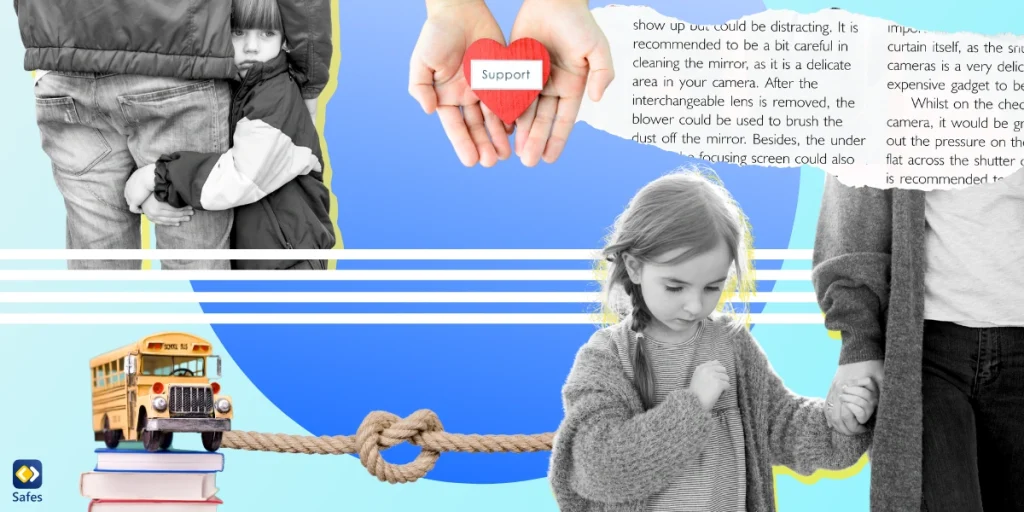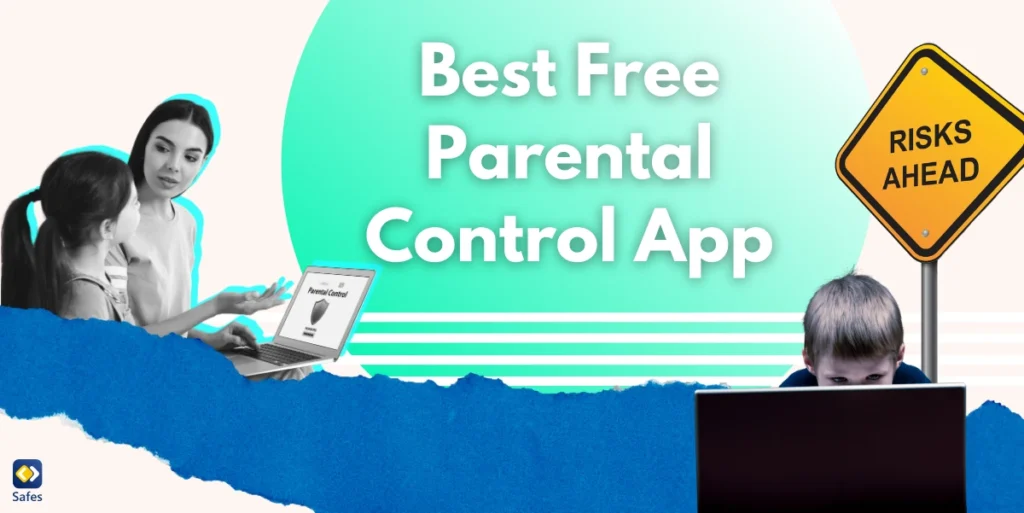Separation anxiety is a common issue that many children experience when they start school. However, there are strategies that parents and schools can implement to help ease their stress and anxiety. In this article, we’ll discuss the common signs and impacts of separation anxiety and provide practical tips on how to help a child with separation anxiety at school.
Download and Start Your Free Trial of the Safes Parental Control App
Understanding Separation Anxiety
Separation anxiety is a normal part of a child’s development, typically occurring in younger children, such as when a 5-year-old wants to attend kindergarten. It stems from the fear of being separated from their primary caregiver. Most children outgrow separation anxiety as they become more secure in their environment. Still, some may experience persistent separation anxiety that interferes with their daily functioning.
Common Signs of Separation Anxiety
- Clinging behavior: The child may cling to their parent or caregiver and resist being left alone.
- Tearfulness: The child may cry excessively or have difficulty calming down when separated from their loved ones.
- Refusal to attend school: The child may express a strong desire to stay home and resist going to school.
- Physical symptoms: Separation anxiety can sometimes manifest as physical complaints such as stomachaches, headaches, or nausea.
- Fear of being alone: The child may express fear or discomfort when being left alone, even for short periods.
- Sleep disturbances: Separation anxiety can disrupt a child’s sleep patterns and lead to difficulties falling asleep or frequent night waking.
Separation Anxiety’s Impacts on a Child
Separation anxiety can have a significant impact on a child’s well-being and academic performance. When a child is experiencing separation anxiety, they may struggle to focus and participate in school activities, which leads to difficulties in learning and social interactions. The constant worry and fear associated with separation anxiety can also contribute to emotional distress and affect their overall mental health. You should address separation anxiety promptly to prevent long-term negative consequences for your child’s well-being and academic success.
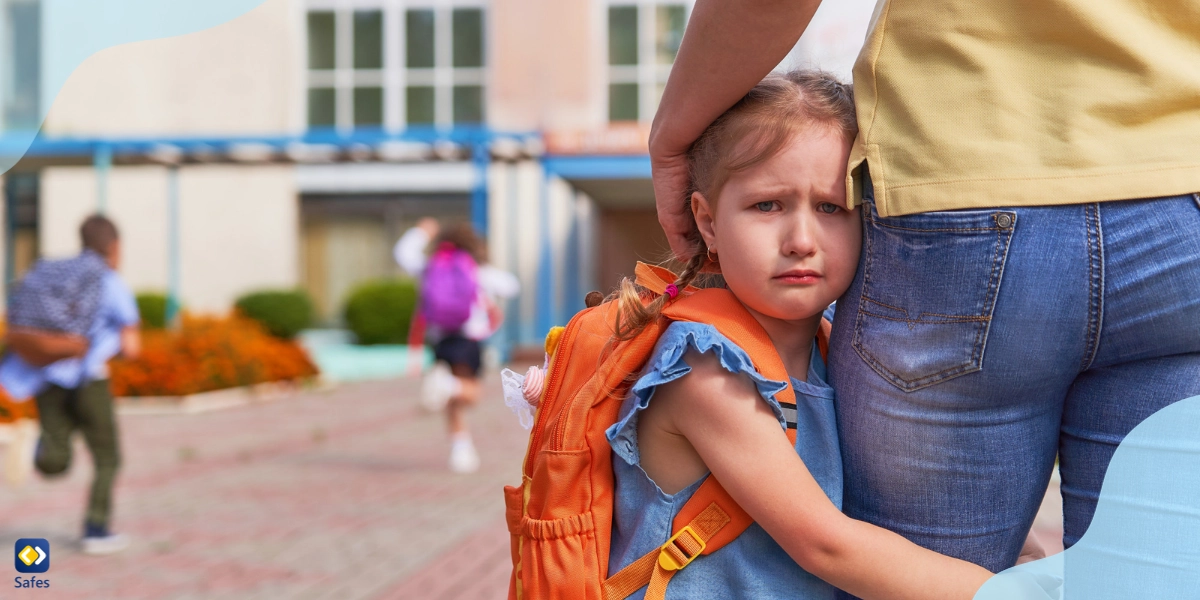
How Parents Can Support Children with Separation Anxiety
Parents play a critical role in supporting their children through separation anxiety. Here are some strategies that you, as a parent, can practice to ease your child’s stress:
-
Establish a Secure Attachment
Spend quality time with your child doing activities that promote bonding and offer reassurance and comfort when your child is anxious. A secure attachment can be a foundation for your child’s emotional well-being and help them navigate separation anxiety.
-
Create a Predictable Routine
Having a predictable routine can help children feel more secure and reduce anxiety. Create morning and bedtime routines and communicate the school schedule to your child so they know what to expect throughout the day. A structured routine provides stability and can ease anxiety related to transitions, such as going to school.
-
Gradual Exposure to Separation
Gradually exposing your child to brief periods of separation can help them build confidence and trust. Start with short partitions, such as leaving your child with a trusted caregiver or family member for a short time. As your child becomes more comfortable with these separations, gradually increase the duration. This gradual exposure can help desensitize your child to separation and reduce anxiety.
-
Encourage Open Communication
Create a safe and open environment for your child to share their feelings. Encourage them to express their fears and worries about separation and validate their emotions. Let them know it is normal to feel anxious and reassure them that you support them. Active listening and empathetic responses can help your child feel understood and give them emotional security.
-
Practice Relaxation Techniques
Teach your child relaxation techniques that they can use when they feel anxious or overwhelmed. Deep breathing exercises, progressive muscle relaxation, or visualization techniques can help calm their nervous system and reduce anxiety. Practice these techniques together so your child feels comfortable using them independently when needed.
-
Develop a Goodbye Ritual
Create a special goodbye ritual that provides comfort and reassurance to your child during separation. This could be a specific phrase, a special handshake, or a small token that they can keep with them throughout the day. Having a consistent goodbye ritual can help your child feel more secure and provide a sense of continuity during the separation.
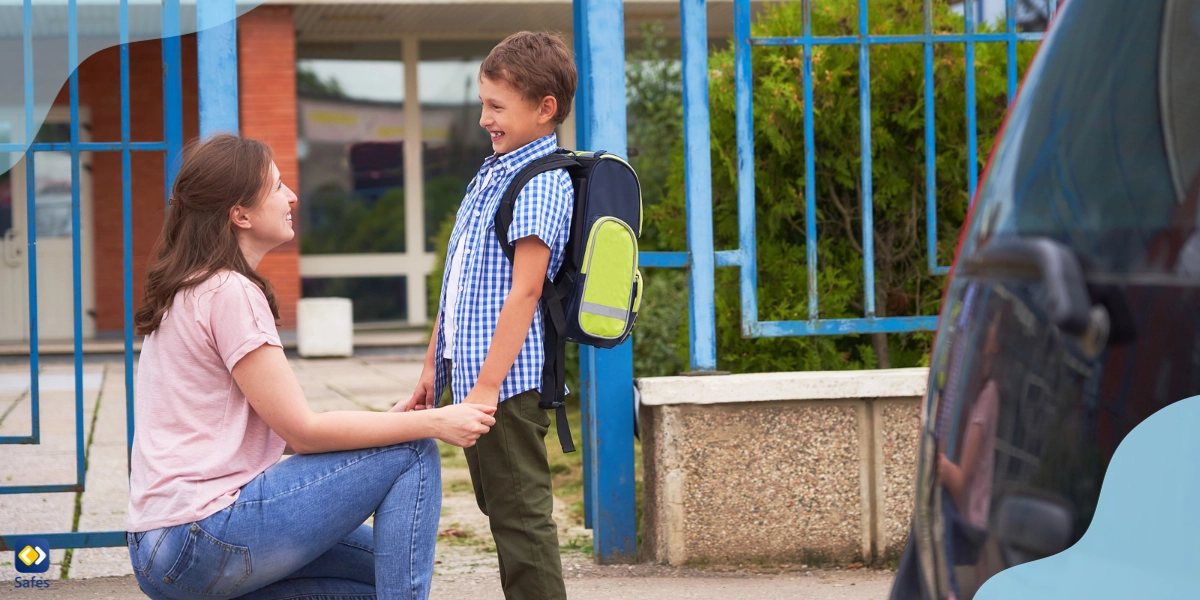
Strategies for Schools to Support Children with Separation Anxiety
Schools also play a crucial role in supporting children with separation anxiety. Here are some strategies that you, as a school administrator, can implement:
-
Welcoming Orientation Programs
Organize orientation programs before the school year begins to help children familiarize themselves with the school environment. These orientation events can help alleviate anxiety by making the school environment more familiar and less intimidating.
-
Supportive Teachers and Staff
School staff should be empathetic, patient, and responsive to a child’s emotional needs. Encourage teachers to create a warm, welcoming classroom environment where children feel safe and included. They should be able to comfort a child who misses a parent.
-
Clear Communication with Parents
Regularly update parents on their child’s progress and any challenges they may face. Keep them in the loop when a child misses their mom or dad.
- Related Article: The Impact of Parent Involvement in Schools
-
Gradual Transition Plan
Implement a gradual transition plan for children with separation anxiety. With this approach, they’ll become more comfortable with the school environment and build trust with their teachers and peers.
-
Designated Safe Spaces
Create designated safe spaces within the school where children can go to calm themselves during times of heightened anxiety. These spaces should be quiet, comfortable, and equipped with calming resources such as books, soft toys, or sensory tools. Encourage children to utilize these spaces when needed and provide guidance on self-regulation techniques.
-
School-based Counseling Support
Offer school-based counseling services to children with separation anxiety. School counselors can provide individual or group therapy sessions to help children develop coping strategies and resilience. These sessions can also provide a safe space for children to express their feelings and receive peer support.
- Related Article: The Essential Roles of School Counselors in Student Development
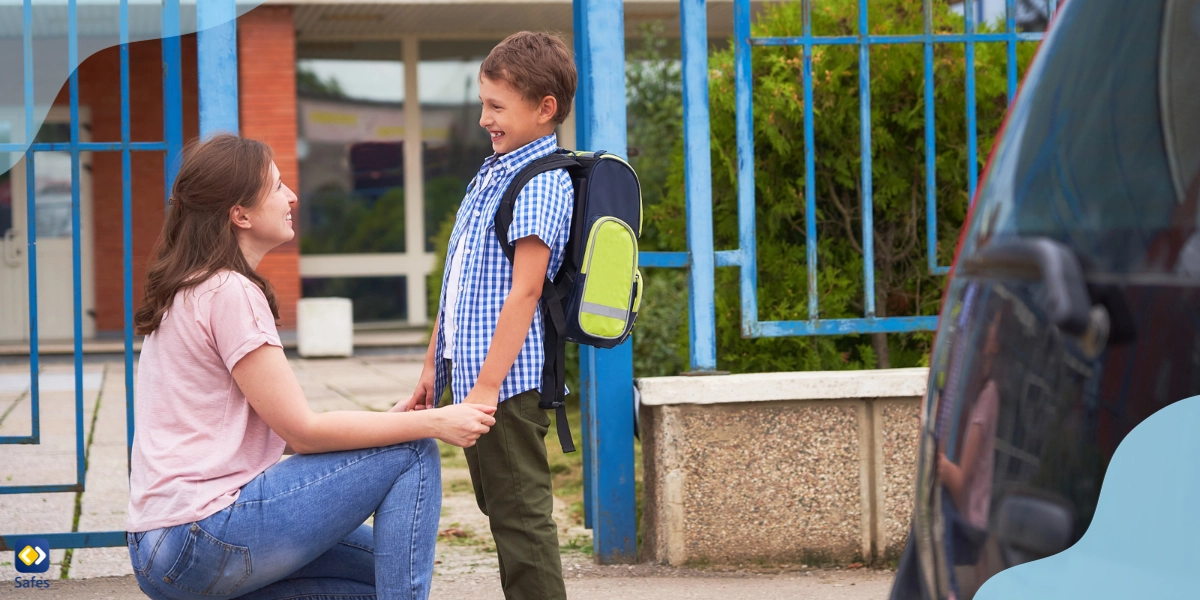
Coping Strategies for Parents and School Administrators
Parents and school administrators can collaborate to provide a supportive environment for children with separation anxiety. Here are some coping strategies that can help:
-
Regular Updates and Collaboration
Maintain regular communication between parents, teachers, and school administrators to stay informed about the child’s progress and any changes in their separation anxiety. Collaborate on strategies and interventions to support the child’s emotional well-being and academic success.
-
Encourage Peer Connections
Promote opportunities for children to develop friendships and social connections at school. Encourage inclusive activities that nurture positive peer relationships and help children feel a sense of belonging. Peer support can play a significant role in reducing separation anxiety and promoting emotional well-being.
-
Foster a Positive School Environment
Create a positive and inclusive school environment that values diversity and promotes kindness and empathy. Implement anti-bullying measures and social-emotional learning programs that teach children essential skills for managing emotions and building healthy relationships.
-
Implement Transition Support Programs
Develop transition support programs that provide additional resources and guidance for children with separation anxiety. These programs can include workshops for parents, professional development for teachers, and peer mentoring initiatives. By equipping parents and teachers with the necessary tools, children can receive consistent support during their transition to school.
- Related Articles:
Final Words on How to Help a Child with Separation Anxiety at School
Starting school can be challenging for both children and parents. By understanding the signs of separation anxiety and implementing practical strategies, parents and schools can support children through this transitional period. Creating a secure attachment, establishing a predictable routine, and encouraging open communication are essential for parents. Schools can provide a welcoming environment, supportive teachers, and designated safe spaces for anxious children. By working together, parents and schools can help children navigate separation anxiety and nurture their emotional well-being and academic success at school.
Your Child’s Online Safety Starts Here
Every parent today needs a solution to manage screen time and keep their child safe online.
Without the right tools, digital risks and excessive screen time can impact children's well-being. Safes helps parents set healthy boundaries, monitor activity, and protect kids from online dangers—all with an easy-to-use app.
Take control of your child’s digital world. Learn more about Safes or download the app to start your free trial today!
